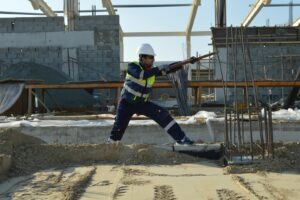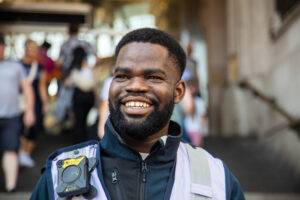
Lamanche Community Farm was funded through Kickstarter
Crowdfunding is now a legal form of finance for start-ups in the US. Storm Cunningham looks at the success of the model on local renewal in the first of two articles from his new book ReCivilising: Rise of the Renewal Renegades
There’s nothing new about citizens banding together to provide a service their local government should be providing, but isn’t… or to stop their local government from doing (or supporting) something they are doing, but shouldn’t be. There’s also nothing new about citizens using social media to organize such activities more efficiently.
What is new is citizens using crowd technologies to quickly design, fund, and launch local projects and programmes to improve their communities. Social media only connects people: in order to effect real change, cooperation on real work is needed. That’s where crowd technologies enter the scene.

In 2011, a small group of community activists decided to turn an ugly vacant lot in New Orleans into a community farm, but needed $4,000 in order to do so. They posted the Lamanche Community Farm project on the largest (of over a thousand worldwide) crowdfunding sites — Kickstarter.com — and 30 days later had $4,425 from 84 people. The farm is now thriving, the dead space is alive and beautiful, local diets are being improved via fresh produce, and the city loves it.

New York’s High Line park. Photo by Storm Cunningham
You might be aware of Manhattan’s famed High Line project. This is a citizen-led initiative that turned an abandoned elevated urban railway into one of the world’s great new urban parks. It might be the best thing to happen to lower Manhattan in the past century. Besides providing a wonderful community amenity, the High Line has stimulated a wealth of economic value. New redevelopment projects abound, as real estate investors recognise the value that proximity to such an amenity adds to the rate they can fetch per square metre.
The city has now largely taken charge of the High Line’s future and is extending the park for the second time. This third section of old railway reaches the Hudson River and will help regenerate the vast Hudson Yards rail yards. The city has been trying to redevelop this dead area for some two decades and sees the High Line extension as the catalyst that will finally make it happen. In fact, just the announced intention to do so has already resulted in the several major new high-rise housing projects.
 But you probably haven’t heard about the Low Line, the Delancey Underground Park. A couple of architects saw the potential to turn a huge abandoned trolley terminal on the lower east side of Manhattan into the world’s first underground park. They needed $100,000 to design it, so they posted the project on Kickstarter, and had $155,186 from 3,300 backers just 45 days later.
But you probably haven’t heard about the Low Line, the Delancey Underground Park. A couple of architects saw the potential to turn a huge abandoned trolley terminal on the lower east side of Manhattan into the world’s first underground park. They needed $100,000 to design it, so they posted the project on Kickstarter, and had $155,186 from 3,300 backers just 45 days later.

Lamanche Community Farm was created on waste land in New Orleans
KICKSTARTING COMMUNITIES
Crowdfunding is being used to fund projects, usually with incentives such as t-shirts or other goodies to motivate higher levels of contribution. Authors, musicians, and independent movie-makers use crowdfunding to pre-sell something that doesn’t yet exist, in order to bring it into existence. Over 10% (17) of the movies shown at the Sundance Film Festival this year were financed on Kickstarter. With the recent passage of the Jobs Act in the U.S. Congress, America’s small entrepreneurs can now legally use crowdfunding to finance business start-ups, bypassing many onerous regulatory processes designed for larger companies.
Kickstarter currently has over 100 community farm projects underway, such as the Raleigh (North Carolina) City Farm. They sought $10,000, and their campaign ended this month having raised over $15,000 from 346 backers. Kickstarter projects range from rap albums, books, and independent movies, to citizen-led regeneration projects; all moving from idea to reality in just weeks. They recently funded two projects of over $1m each. Kickstarter recently announced that they are on track this year to distribute more money ($150m) than the National Endowment for the Arts.
CROWD-FUNDING IN THE UK
As awesome as Kickstarter and its ilk are, they are just the beginning. Even better would be a crowdfunding site with three key additional features:
1) a focus specifically on community regeneration (regeneration is an ongoing process of all healthy living systems, so it’s not just for distressed communities)
2) inclusion of both large and small projects that renew our natural, built, and socioeconomic environments
3) integration of citizen-based crowdfunding with foundation grants and government funding.
Lo and behold, such a leading-edge site already exists in the UK: SpaceHive.com. Here are four of SpaceHive’s current and recent projects.
• Glyncoch Community Centre will redevelop a run-down community centre in the hope this will, in turn, help revitalise the local Welsh community. They sought £791,000, and achieved it easily.
• Revive North Pond intends to restore a historic 12th century pond of great ecological value. It has become badly overgrown, and is drying out. The project will also create two public viewing areas, which will enhance both quality of life and tourism for the local community (Bishop’s Waltham, in Hampshire). The project is currently in the design phase, and crowdfunding has not yet started.
• Stockwell Urban Oasis will revitalise a dead space in the south of Greater London, turning it into an urban forest garden and pond. It will have an artists’ facility, and will serve as a play area for local children that will also educate them about both nature and agriculture. Currently in design phase, the crowdfunding will start soon.
• Unlock London’s Secret Dock aims to revitalise Cody Dock, a derelict east London dock whose regeneration will also remove the final obstacle to a continuous 26-mile riverside walk. It’s seeking £140,818 and currently has over £45,000 with almost two months to go in the campaign.
But even SpaceHive, wonderful as it is, doesn’t represent the ultimate tool for ‘renewal renegades’, as I’ve dubbed these citizen-regenerators.
We’ll look at some features of an ideal support tool in the next instalment of this series of articles. But let’s back up a moment for some context, so we can examine the dynamics underlying this trend towards technology-based, citizen-led regeneration.
USING CROWD TOOLS TO ENABLE ‘REDEMOCRACY’
Enlightened local leaders have long made efforts to tap the ideas of their populace. But the lack of appropriate tools has frustrated such efforts, and has kept successful ones from being replicated. Inviting citizens to vote, write letters, respond to polls and show up at town hall meetings is all well and good, but it hardly qualifies as a rigorous, reliable process. When those methods don’t work, citizens organise protests, but those aren’t part of an actual process either.
Public meetings tend to attract a few loud, selfish, narrow-minded citizens who co-opt the dialogue to promote their own agendas, or just to shoot down the ideas of others. Such ugliness tends to sap the enthusiasm of even the most well-meaning of mayors and city councillors, and most such forums are quickly dropped. Now, with the acceptance and proliferation of crowd-based technologies, harnessing the wisdom of the crowd has never been easier. Well-designed crowd tools enable efficient ranking of comments and ideas by participants, which means good ideas rise to the top and the noise sinks to the bottom.
With crowd tools, projects quickly move from ideas — which people
tend to argue over — to actual progress,
which tends to inspire support
Many cities are so change-resistant or bureaucratic that renewal renegades are forced to take the ‘ask for forgiveness rather than permission’ approach to launching regenerative projects. With crowd tools, projects quickly move from ideas—which people tend to argue over — to actual progress, which tends to inspire support. The smart renewal renegades remember to offer their elected leaders a chance to take credit for these successes.
With the right tools, citizens can more effectively partner with supportive local governments, and bypass non-supportive ones. They can get out in front of change-resistant institutions, pulling them in the right direction by example, rather than pushing from behind. When followers lead, leaders follow.
In this way, a community can stop lurching inefficiently from project to project. They can create an ongoing programme that constantly builds confidence in their future, safe from changes of political administration. In this way, citizens transform from consumers of revitalisation to makers of revitalisation. In this way, revitalisation becomes something done by communities, not just to communities. In this way, a local autocracy, technocracy, or oligarchy becomes a renewal democracy, or what I call ‘redemocracy’. In redemocracy a community’s democratic process is renewed during the act of renewing the community itself.


















Storm, I enjoyed reading your piece over-viewing the current state of regeneration technology. I would be quite delighted to see a new wave of revitalization activities spring up from the this crowd-action process. Please give us more of your reporting here on community leaders responding and gathering their people together to ‘recivilize’.
David Marcmann
Revitalization Advocate